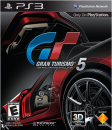http://www.eurogamer.net/articles/super-stardust-3d-720p120-confirmed-article
Last Saturday, Digital Foundry took a look at the 3D gaming potential soon to be unlocked by a new system upgrade for the PlayStation 3. We talked about what was out there already, discussed Ubisoft's Avatar and the performance levels of current 3D titles, and suggested that Sony was planning something more technologically advanced than what we've seen in the current implementations of 3D games - something that justified the upcoming firmware upgrade.
Our theory? It made sense that the PS3 upgrade would facilitate support for the new 3D protocols in the HDMI 1.4 standard, specifically the provision for full resolution 3D - basically a double-height, or double-width framebuffer. Thanks to an assist from SCEE, Digital Foundry had the chance to pose a few questions to the Housemarque Super Stardust HD tech team: engine lead Seppo Halonen and technical director Harri Tikkanen.
The answers are hugely enlightening, revealing that Sony's stereoscopic 3D system is indeed based on the notion of full 720p resolution, unlike the current 3D games released to date. This is hugely significant, confirming that the new version of Super Stardust HD is effectively running at a native resolution of full 720p at a staggering 120 frames per second (60 for each eye). We're talking about something not just based on low-resolution buffers as in Invincible Tiger and Avatar, but something new, exciting and a whole lot more challenging to achieve: a true technical leap, and a definite unique selling point for the Sony platform.
Digital Foundry: Can you give us some idea of the re-engineering you had to do to Super Stardust HD in order to support 3D?
Seppo Halonen: For the first thing, we took SSHD and made it use the current revision of our game engine with over a year of additional development. As the engine is highly modular it was mainly a matter of adding stereoscopic cameras and configuring the engine to render everything twice. That was of course just the beginning: after that we had to optimise a lot, as we now had 8.3ms instead of 16.7ms to render a frame. Luckily we had 50 per cent of the SPU power left, so we tapped into that. The current version of the game heavily pre-processes the data that goes to RSX to make sure it can chew through it as quickly as possible.
Digital Foundry: What's the general principle behind your interpretation of 3D? Two lower-resolution frames incorporated into the PS3's 60Hz playback, or something more advanced? Is there support for 1080p?
Seppo Halonen: We render two full-resolution 720p frames with identical content compared to standard mode. Doubling the rendering is quite a challenge in itself to begin with, and we are happy with current 720p 60FPS stereo mode.
Digital Foundry: What are the main challenges of stereoscopic 3D - are you bound by pixel shaders, vertex shaders, drawcalls?
Seppo Halonen: It depends entirely on the game, and even different parts of a game are going to be bound by different things. For SSHD it was mainly drawcalls and polygons - we have lots of objects with lots of polygons and massive particle effects. I solved the issue by moving vertex processing from GPU to SPU and merging as many objects as possible to one drawcall. Previously every asteroid chunk and every enemy was in a separate drawcall; in the stereo version they go out in a few fell swoops.
Digital Foundry: Is support for 3D going to be a consideration for all your future PS3 games?
Harri Tikkanen: Some games lend themselves better to 3D than others, so we will make the decision on a game by game basis.
Want to know more about the origins of Housemarque's Super Stardust HD? Check out the Digital Foundry tech retrospective for an in-depth account on the development of what remains one of the best shooters of the current console generation.
------------------------------------------------------------------------------------------------
Very interesting indeed. But I wonder what Sony's general plan is, because running 720p/120FPS will be near impossible for a lot of games on the PS3 if I'm not mistaken. Still, it's awesome that they have been able to do it the most lossless way 




























































